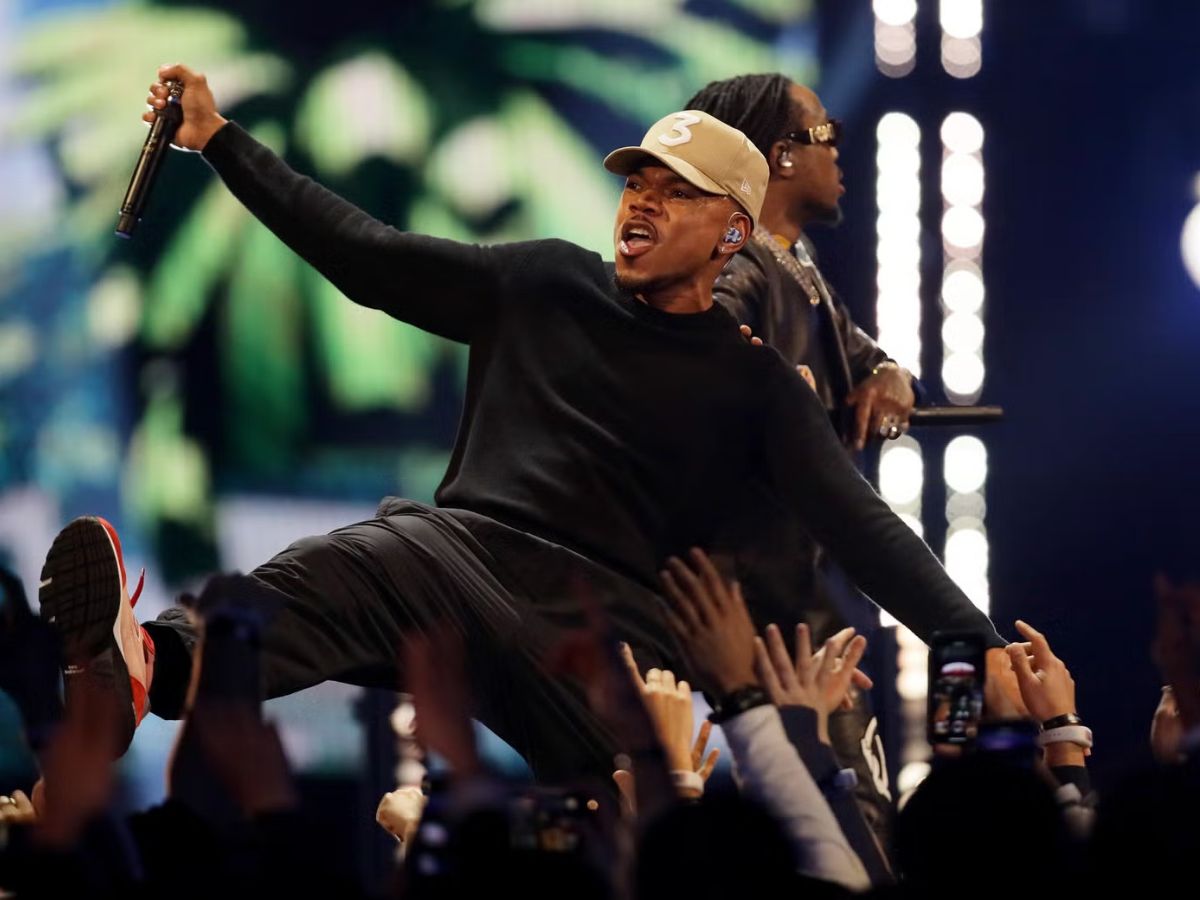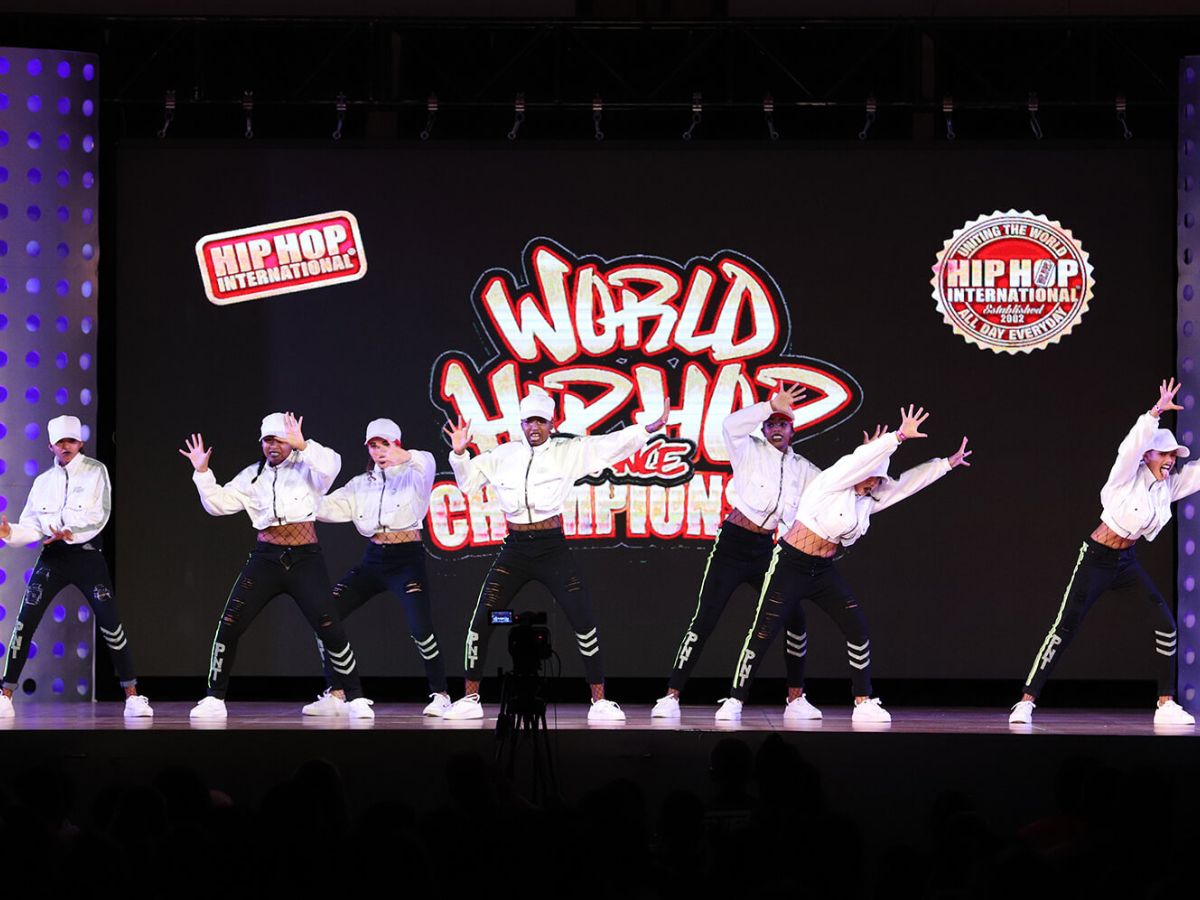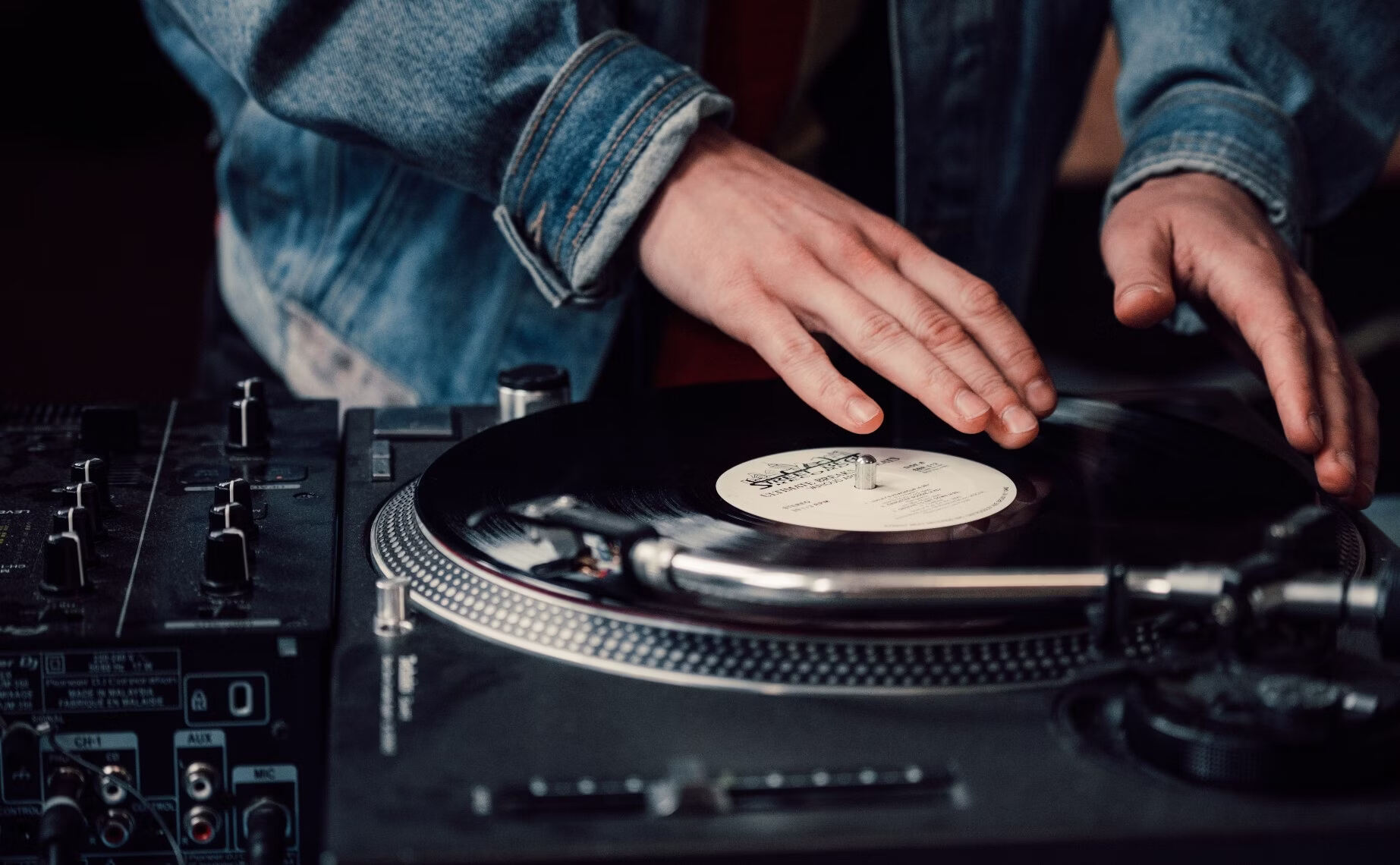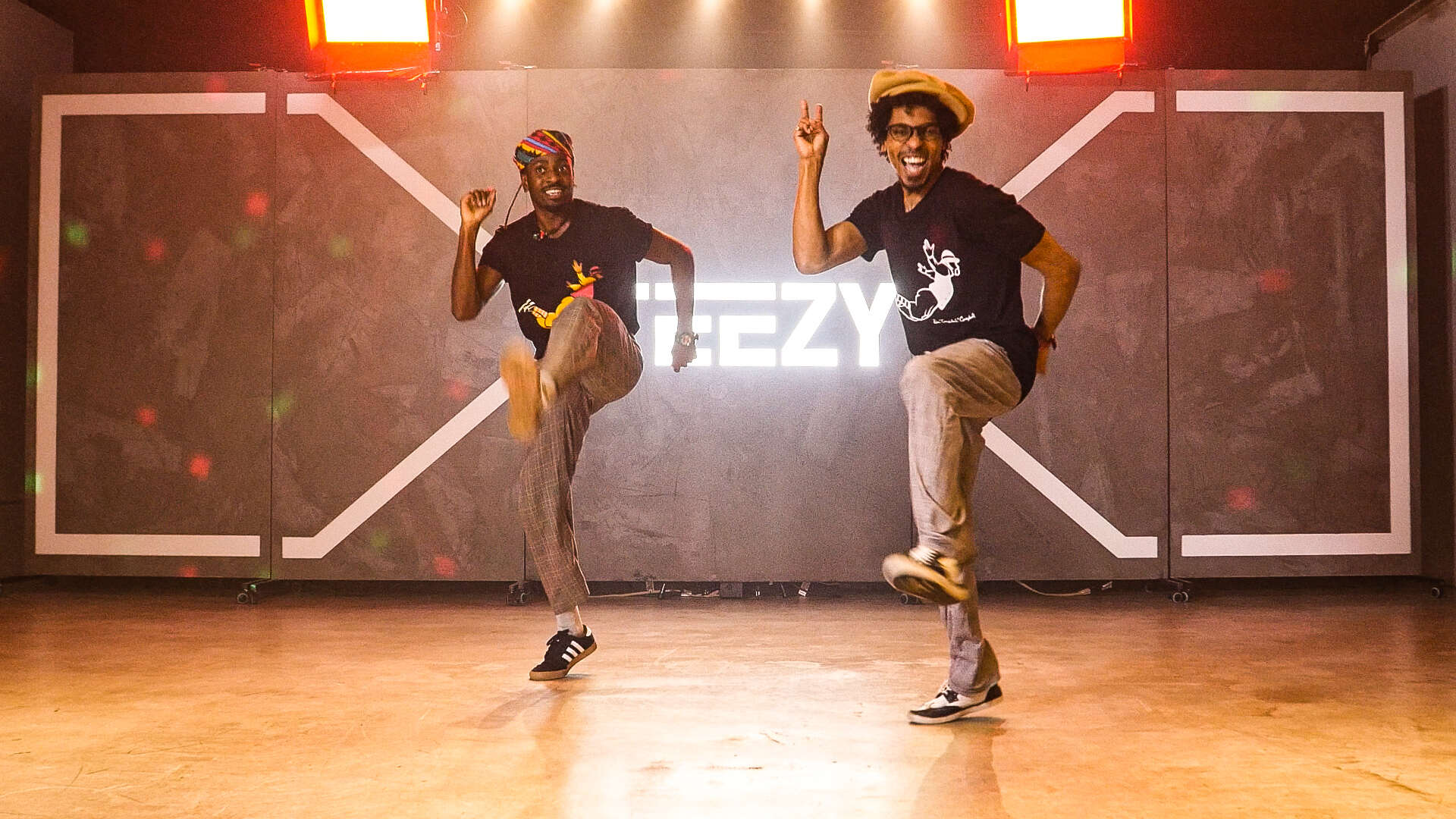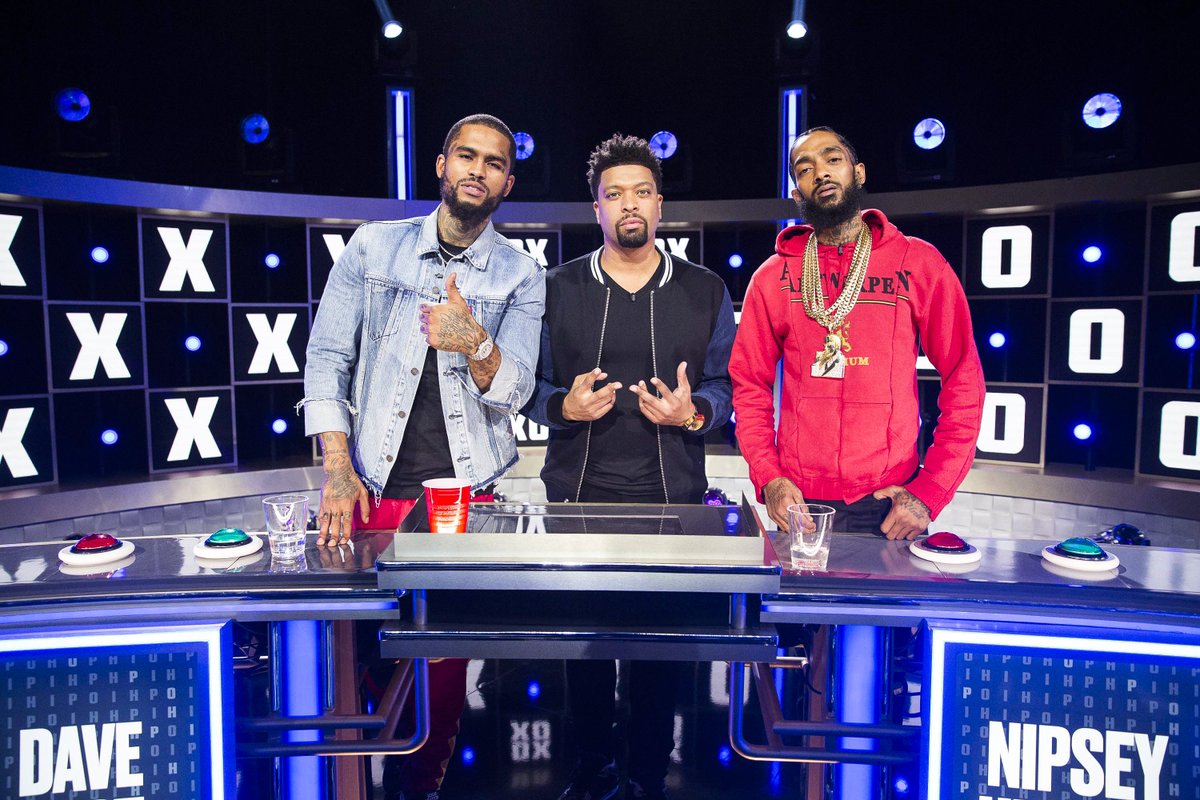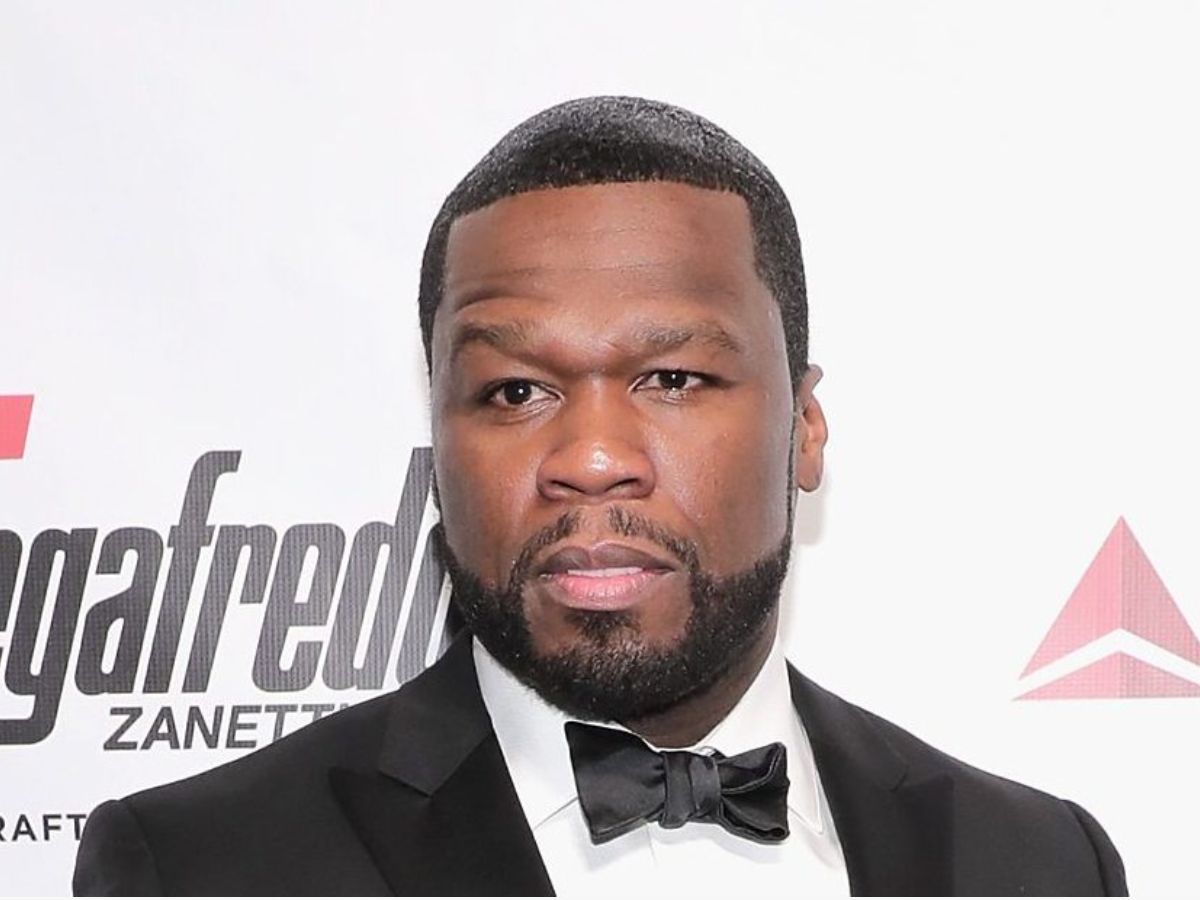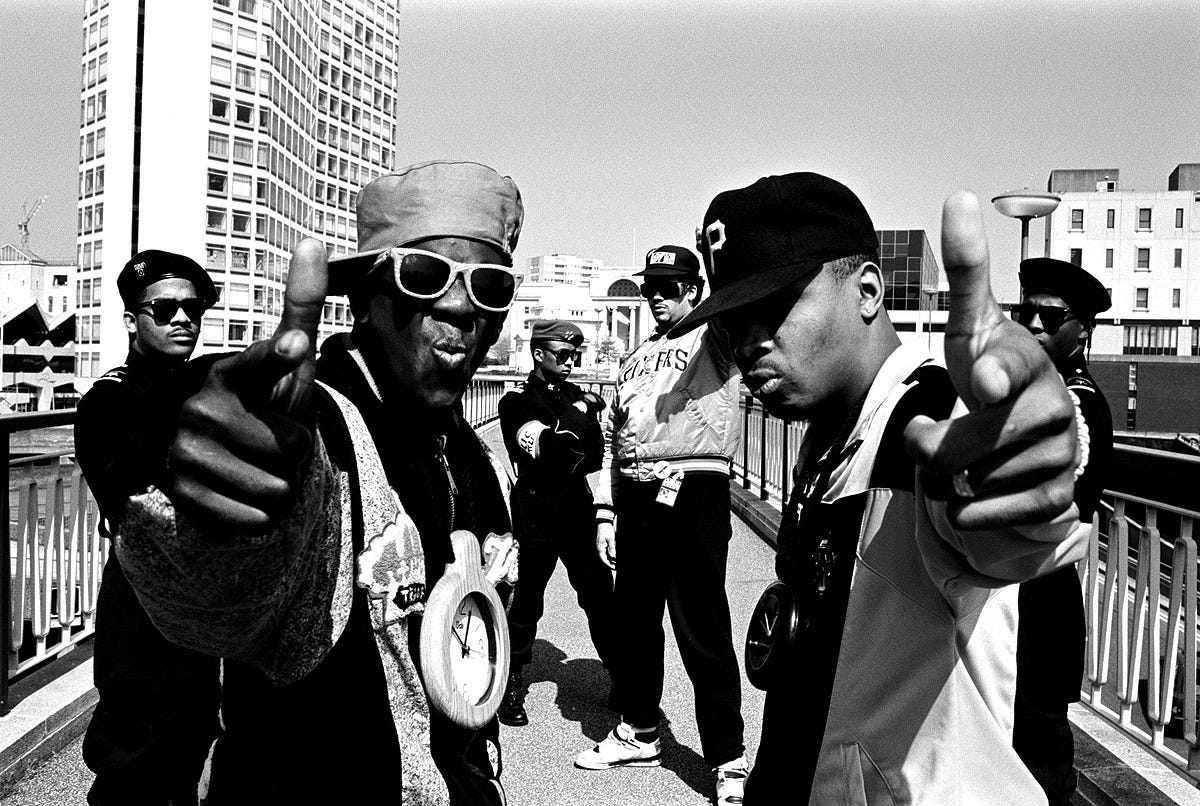

Hip Hop
What Is Hip-Hop Culture
Modified: January 22, 2024
Discover the essence and evolution of Hip-Hop culture, from its vibrant music and dance to its powerful influence on fashion and social movements. Uncover the roots and impact of Hip-Hop in this comprehensive guide.
(Many of the links in this article redirect to a specific reviewed product. Your purchase of these products through affiliate links helps to generate commission for AudioLover.com, at no extra cost. Learn more)
Table of Contents
- Introduction
- Definition of Hip-Hop Culture
- Historical Development of Hip-Hop
- Elements of Hip-Hop Culture
- Music in Hip-Hop Culture
- Dance in Hip-Hop Culture
- Graffiti in Hip-Hop Culture
- Fashion in Hip-Hop Culture
- Influence and Impact of Hip-Hop Culture
- Criticisms and Controversies Surrounding Hip-Hop Culture
- Conclusion
Introduction
Hip-hop culture is a dynamic and vibrant movement that has made a significant impact on music, dance, fashion, and art since its emergence in the 1970s. Originating in the African-American and Latino communities in the Bronx, New York City, hip-hop has grown into a global phenomenon, influencing countless individuals and shaping popular culture.
At its core, hip-hop is more than just a genre of music; it is a way of life, encompassing various elements such as rap music, DJing, breakdancing, graffiti art, and fashion. Each element plays a crucial role in the culture, contributing to the overall expression and creativity of the movement.
The roots of hip-hop can be traced back to the harsh social and economic conditions faced by marginalized communities in the 1970s. It served as a form of expression and resistance, giving a voice to those who felt unheard. Through its expressive and energetic nature, hip-hop provided an escape from the realities of life and became a powerful medium to tell stories, share experiences, and address social and political issues.
Over the decades, hip-hop has evolved and diversified, branching out into different subgenres and styles. From the conscious and socially conscious lyrics of artists like Public Enemy and Kendrick Lamar to the party anthems of artists like Jay-Z and Cardi B, hip-hop has consistently reflected the ever-changing landscape of society.
In this article, we will explore the various elements of hip-hop culture, delve into its historical development, analyze its impact on music, fashion, and art, and discuss some of the criticisms and controversies surrounding the movement. Whether you’re a dedicated hip-hop fan or simply curious about its influence, this article will provide you with a comprehensive understanding of the rich and influential world of hip-hop culture.
Definition of Hip-Hop Culture
Hip-hop culture is a multifaceted and inclusive movement that encompasses various artistic and creative expressions. At its core, hip-hop culture is about self-expression, authenticity, and social commentary. It is an amalgamation of music, dance, fashion, art, and language that reflects the experiences, struggles, and aspirations of urban communities.
One of the fundamental elements of hip-hop culture is rap music. Rap, often performed over a beat or instrumental, involves rhythmic and poetic rhymes delivered in a spoken manner. It serves as a platform for artists to share their stories, express their emotions, and convey messages about their lives, society, and culture.
In addition to rap music, DJing plays a crucial role in hip-hop culture. DJs, known as turntablists, manipulate vinyl records, mix beats, and create unique sounds. They are responsible for providing the beats and rhythms that rappers flow over. DJing is not only a technical skill but also an art form in itself, with DJs showcasing their creativity, scratching techniques, and ability to read the crowd.
Another integral aspect of hip-hop culture is breakdancing, also known as b-boying or b-girling. Breakdancing is a form of street dance that originated alongside hip-hop music. It is characterized by intricate footwork, freezes, and acrobatic movements. Breakdancers use their bodies as instruments, expressing themselves through dynamic and agile movements that captivate audiences.
Graffiti art is also a distinctive element of hip-hop culture. Originating as a form of urban expression, graffiti has become an integral part of hip-hop’s visual aesthetic. Graffiti artists use spray paint, markers, and other materials to create intricate and vibrant artworks on walls and surfaces. Graffiti serves as a form of self-expression, a way to claim and transform public spaces, and a means of visually representing the voice and identity of the hip-hop community.
Lastly, fashion plays a significant role in hip-hop culture. Hip-hop fashion is often characterized by baggy clothing, sneakers, oversized accessories, and bold colors. It has been influenced by urban streetwear, sports culture, and individual style. Hip-hop fashion is a reflection of the culture’s creativity, confidence, and ability to defy societal norms.
Overall, hip-hop culture is a powerful and influential movement that incorporates diverse artistic expressions and is driven by the desire for self-expression, social critique, and cultural identity. It continues to evolve and expand, shaping the landscape of music, dance, fashion, and art worldwide.
Historical Development of Hip-Hop
The historical development of hip-hop traces back to the 1970s in the Bronx, New York City. It emerged as a creative outlet for marginalized communities, particularly African Americans and Latinos, who faced social and economic challenges.
During this time, block parties became a hub of musical and cultural innovation. DJs such as Kool Herc, Grandmaster Flash, and Afrika Bambaataa played an essential role in pioneering the hip-hop sound. They used turntables and mixers to create rhythmic and danceable beats by isolating and loop-playing instrumental breaks in popular songs.
As the DJing element of hip-hop took off, emceeing, or rapping, emerged as a vital component. Emcees, or MCs, would use their lyrical flow and wordplay to engage and entertain the crowd. Their rhymes told stories about their lives, experiences, and issues faced by their communities. Early pioneers in rap include Grandmaster Caz, Melle Mel, and Rakim, who helped establish rap as a form of artistic expression within hip-hop culture.
In addition to the music, breakdancing played a significant role in the development of hip-hop. B-boys and B-girls would showcase their dance skills during block parties, engaging in battles and displaying their athleticism and creativity through intricate footwork, spins, and dynamic moves.
Graffiti art also emerged as a prominent element of hip-hop culture. Spray-painted murals and tags adorned walls, trains, and other public spaces, becoming a visual representation of the hip-hop community’s identity and artistic expression. Pioneering graffiti artists such as Phase 2, Lee Quiñones, and Lady Pink helped establish graffiti as a legitimate form of art and an integral part of the hip-hop movement.
As hip-hop gained popularity, it extended beyond its birthplace in the Bronx, spreading to other neighborhoods, cities, and eventually throughout the world. It began to transcend racial and cultural boundaries, becoming a global phenomenon that resonated with individuals from diverse backgrounds.
The 1980s marked a period of commercial success and mainstream recognition for hip-hop. Artists such as Run-D.M.C., LL Cool J, and Public Enemy achieved widespread fame with their unique styles and socially conscious lyrics. Rap music started to dominate the charts, and hip-hop culture began to influence fashion, language, and popular culture at large.
In the 1990s, hip-hop experienced a golden era, with artists like Tupac Shakur, The Notorious B.I.G., and Wu-Tang Clan pushing boundaries and showcasing the diversity within the genre. New subgenres emerged, including gangsta rap, conscious rap, and alternative rap, contributing to the ever-evolving sound of hip-hop.
Since then, hip-hop has continued to evolve and expand, with new artists pushing boundaries and redefining the genre. It has become a global cultural force, influencing music, fashion, art, and even political activism. From its humble beginnings in the Bronx to its status as one of the most dominant and influential cultural movements in the world, the historical development of hip-hop is a testament to the power of creativity and self-expression.
Elements of Hip-Hop Culture
Hip-hop culture is composed of several interconnected elements that give it its unique identity and artistic depth. These elements include music, dance, graffiti, and fashion, each contributing to the overall aesthetic of the culture.
1. Music: At the heart of hip-hop culture is the music. Rap, often accompanied by rhythmic beats and intricate wordplay, serves as the primary form of musical expression within the genre. It provides a platform for artists to deliver powerful and lyrical storytelling, addressing social issues, personal experiences, and cultural identity. The music often features DJ scratches, sampling, and a variety of musical styles, ranging from boom-bap to trap, showcasing the diversity within the genre.
2. Dance: Breakdancing, or b-boying/b-girling, is an integral part of hip-hop culture. It is characterized by athletic movements, intricate footwork, spins, and freezes. Breakdancing originated as a way for dancers to interact with the music and express their creativity and personal style. It is often showcased in battles and performances, captivating audiences with its dynamic movements and innovative choreography. Other dance forms, such as popping, locking, and krumping, have also emerged within the hip-hop community and contribute to the rich tapestry of the culture.
3. Graffiti: Graffiti art has long been associated with hip-hop culture. It serves as a visual representation of the movement, highlighting the creativity and artistic expression of individuals within the community. Graffiti artists use various mediums, including spray paint and markers, to create colorful and elaborate murals, tags, and pieces. From tagging their names to creating intricate and meaningful artworks, graffiti artists leave their mark on the urban landscape, reclaiming public spaces and contributing to the visual aesthetic of hip-hop.
4. Fashion: Hip-hop fashion is known for its distinctive and bold style. Baggy clothing, oversized accessories, sneakers, and vibrant colors are commonly associated with the culture. Hip-hop fashion is deeply influenced by urban streetwear and sports culture, allowing individuals to express their personal style and creativity. It has also acted as a catalyst for trends in mainstream fashion and continues to inspire and influence the industry.
These elements of music, dance, graffiti, and fashion collectively define hip-hop culture. They provide an avenue for self-expression, creativity, and a means to address social issues and celebrate cultural identity. Together, they form the foundation of the diverse and vibrant hip-hop community, constantly evolving and shaping the cultural landscape.
Music in Hip-Hop Culture
Music is a fundamental element of hip-hop culture, serving as the primary mode of artistic expression within the genre. Hip-hop music, often referred to as rap, combines rhythmic beats and poetic lyrics to convey powerful messages, personal stories, and social commentary.
Rap is the vocal delivery style that defines hip-hop music. It involves the rhythmic and often rhyming delivery of lyrics over a beat or instrumental. The verses, known as bars, are crafted with intricate wordplay, clever metaphors, and storytelling techniques. Rappers use their lyrics to address a range of topics, including social issues, personal experiences, street life, and cultural identity.
One of the defining aspects of hip-hop music is its connection to the DJ culture. DJs play a crucial role in producing the beats and providing the musical backdrop for rappers to perform over. They manipulate records, utilize sampling techniques, and create unique compositions that define the sound of hip-hop. The DJ’s ability to scratch, mix, and blend different tracks adds a dynamic and rhythmic element to the music.
Sampling is another prominent feature of hip-hop music. It involves taking portions of previously recorded music and incorporating them into new compositions. This technique allows artists to pay homage to their musical influences, create unique sounds, and provide a nostalgic connection to the past. Sampling has played a significant role in shaping the sonic landscape of hip-hop music, contributing to its rich and diverse sound.
Hip-hop music is an ever-evolving genre, with various subgenres and styles that have emerged over the years. From the socially conscious lyrics of artists like Public Enemy and Kendrick Lamar to the flashy and boastful rhymes of artists like Jay-Z and Nicki Minaj, hip-hop encompasses a wide range of themes, tones, and musical approaches.
Collaboration is also a key aspect of hip-hop music. Artists frequently collaborate with other musicians, producers, and DJs, resulting in unique and innovative collaborations. These collaborations often bridge different genres and styles, leading to musical fusions and groundbreaking experimentation.
Hip-hop music has not only been a vehicle for artistic expression but has also been a powerful tool for social change. Artists have used their platform and lyrics to shed light on social and political issues, challenge systemic injustices, and advocate for marginalized communities. From the politically charged lyrics of Public Enemy’s “Fight the Power” to the introspective and thought-provoking verses of Kendrick Lamar’s “Alright,” hip-hop has been a catalyst for cultural and social movements.
Overall, music is at the core of hip-hop culture, serving as a means of expression, storytelling, and social commentary. It encompasses diverse styles, techniques, and themes, reflecting the depth and diversity of the genre. Hip-hop music continues to evolve and push boundaries, leaving a lasting impact on popular culture and inspiring generations of artists.
Dance in Hip-Hop Culture
Dance is an integral part of hip-hop culture, with various styles and movements that contribute to its vibrant and dynamic nature. Dance serves as a physical manifestation of the music, allowing individuals to express themselves, showcase their creativity, and engage with the rhythmic beats of hip-hop.
One of the most iconic dance forms within hip-hop culture is breakdancing, also known as b-boying or b-girling. Breakdancing originated alongside hip-hop music in the 1970s and quickly became a cornerstone of the culture. It is characterized by explosive movements, intricate footwork, spins, freezes, and acrobatic displays. Breakdancers, or b-boys and b-girls, use their bodies as instruments to interpret the music and express their individual style and creativity. Breakdancing often takes place in a competitive setting, with dancers engaging in battles to demonstrate their skills and impress the audience.
In addition to breakdancing, hip-hop culture encompasses a variety of other dance styles that have evolved over the years. Popping and locking, often referred to collectively as funk styles, involve sharp, isolated movements and robotic-like effects. These styles emphasize the control of muscles and joints, creating dynamic and rhythmic visual displays. Krumping, characterized by intense, high-energy movements and expressive gestures, emerged as a form of emotional release and self-empowerment within the hip-hop community.
Street jazz, a fusion of hip-hop and jazz dance, combines the fluidity and precision of jazz technique with the urban and energetic elements of hip-hop movements. It brings together different dance styles and influences, resulting in a versatile and expressive form of dance that is both visually captivating and rhythmically engaging.
Choreography plays a significant role in hip-hop dance, with choreographers creating routines and movements that enhance the storytelling and artistic expression of the music. Choreographed hip-hop dance routines often feature synchronized movements, intricate formations, and the incorporation of storytelling elements to convey a narrative or evoke a specific emotion.
Freestyle dancing is also prevalent in hip-hop culture, allowing individuals to express themselves in spontaneous and improvised ways. Freestyle dancers adapt to the music, responding to its rhythms and beats with their own unique movements. It is a form of self-expression that allows dancers to showcase their style, creativity, and individuality.
As with all art forms, dance in hip-hop culture is constantly evolving and being influenced by various cultural and global influences. Dance videos, competitions, and social media platforms have also played a significant role in the development and spread of hip-hop dance, providing a platform for dancers to showcase their talent and connect with audiences worldwide.
Overall, dance is an essential element of hip-hop culture, allowing individuals to physically engage with the music and express their creativity. From breakdancing to street jazz and freestyle, hip-hop dance continues to captivate audiences and play a significant role in the ever-evolving landscape of the culture.
Graffiti in Hip-Hop Culture
Graffiti art is an integral and visually striking element of hip-hop culture. Originating as a form of urban expression, graffiti has become synonymous with the artistic aesthetic and rebellion associated with hip-hop. Graffiti serves as a means of visual storytelling, reclaiming public spaces, and representing the voice and identity of the hip-hop community.
Within hip-hop culture, graffiti artists, also known as writers, use various mediums such as spray paint, markers, and stencils to create intricate and vibrant artworks on walls, trains, and other surfaces. Graffiti is not only about tagging one’s name but also about showcasing artistic skill, creativity, and conveying messages through visual imagery.
Graffiti art often features bold, eye-catching letters and characters, incorporating vibrant colors and intricate designs. Wildstyle, a style of graffiti lettering characterized by complex interlocking and overlapping letters, is particularly prevalent in hip-hop graffiti. Writers masterfully manipulate letterforms, sometimes even making them difficult to decipher, adding a layer of mystique and exclusivity to their artwork.
Just like rap music or dance, graffiti is an expressive form of communication, allowing artists to share their perspectives, comment on social issues, and represent their cultural identity. It acts as a visual representation of the urban environment, reflecting both the challenges and vibrancy of the communities where hip-hop culture emerged.
Graffiti art has a deep connection to the hip-hop movement’s rebellious spirit. In the face of societal limitations and restrictions, graffiti artists use their artwork as a form of defiance and a means to reclaim public spaces. Walls and trains become canvases for self-expression, allowing artists to leave their mark on the urban landscape.
Graffiti is also deeply rooted in the concept of “getting up” or gaining recognition and reputation within the graffiti community. Writers engage in a constant pursuit of artistic development and strive to gain visibility by tagging their names in visible and often challenging locations. This pursuit of recognition drives the competitive and adventurous nature of graffiti culture.
Over the years, graffiti has faced its share of controversy and debate. Many cities view graffiti as vandalism, leading to legal consequences for those caught in the act. However, there is a growing recognition of graffiti as a legitimate art form, with some cities providing designated spaces, known as legal walls, for artists to showcase their skills and creativity.
Despite the controversies, graffiti remains an essential element and a visual representation of hip-hop culture’s creative spirit. It has inspired and influenced other art forms, such as graphic design and street art, and has become an important aspect of the cultural landscape. Graffiti art continues to captivate not only within the hip-hop community but also in the broader art world, emphasizing the power of visual expression in shaping and influencing culture.
Fashion in Hip-Hop Culture
Fashion plays a significant role in hip-hop culture, with its distinctive style and trends that have permeated popular culture. Hip-hop fashion is known for its bold and unique aesthetic, reflecting the creativity, individuality, and cultural influences of the community.
Baggy clothing is one of the defining features of hip-hop fashion. Oversized jeans, t-shirts, and sweatshirts became popular in the 1990s, and the trend continues to be associated with the culture. The baggy style not only allowed for freedom of movement during energetic dance routines but also served as a form of self-expression, rejecting traditional fashion norms and embracing a more relaxed and comfortable look.
Sneakers play a significant role in hip-hop fashion. Sneaker culture within the hip-hop community extends beyond mere footwear preference; it has become a symbol of status, art, and style. From classic models like Air Jordans to collaborations with prominent brands, sneakers have become an integral part of hip-hop fashion, allowing individuals to showcase their knowledge, taste, and appreciation for the culture.
Accessories are another important aspect of hip-hop fashion. Oversized chains, flashy watches, and statement jewelry are commonly seen as accessories in the hip-hop community. These pieces not only serve as fashion statements but also represent wealth, success, and personal style. They add a touch of extravagance and individuality to the overall look.
The influence of sports culture on hip-hop fashion is evident with the popularity of sports jerseys, caps, and athletic brands. Athletes, particularly basketball players, have often been role models for many in the hip-hop community, and their style has been adopted as a fashion statement. Rapper Notorious B.I.G.’s iconic Coogi sweaters became synonymous with hip-hop fashion and influenced the rise of colorful and patterned knitwear in the culture.
In recent years, streetwear brands heavily influenced by hip-hop aesthetics have gained significant popularity. Labels such as Supreme, Off-White, and A Bathing Ape have become staples within the hip-hop fashion scene, blurring the lines between high fashion and street style. Streetwear combines comfort, bold graphics, and unique collaborations that resonate with the culture’s desire for self-expression and individuality.
Furthermore, hip-hop fashion has not only influenced the streets but has made its way into high fashion runways and luxury brands. Designers and brands have drawn inspiration from hip-hop style, incorporating elements of streetwear and urban fashion into their collections. This cross-pollination of high fashion and hip-hop has resulted in collaborations, endorsements, and a reimagining of what is considered fashionable.
Ultimately, hip-hop fashion is more than just clothing; it is a form of self-expression, identity, and cultural pride. It celebrates individuality, defies societal conventions, and embraces diversity. From oversized attire and sneakers to bold accessories and iconic brand collaborations, hip-hop fashion continues to define and shape the boundaries of style.
Influence and Impact of Hip-Hop Culture
Hip-hop culture has had a profound influence and global impact on various aspects of society, including music, fashion, art, language, and even political and social movements. Its infectious energy, creativity, and authenticity have resonated with millions of individuals worldwide, shaping popular culture and leaving a lasting legacy.
One of the most significant contributions of hip-hop culture is its influence on music. Hip-hop has become the dominant force within the music industry, transcending genres and influencing artists from all walks of life. Its impact can be heard in the rhythms, beats, and lyrical styles of not just rap music but also pop, R&B, and even rock. Hip-hop’s emphasis on storytelling, social commentary, and self-expression has paved the way for diverse voices and narratives to be heard in the mainstream music landscape.
Furthermore, hip-hop fashion and style have had a transformative effect on the world of fashion. The bold and unique aesthetic of hip-hop clothing, with its baggy attire, oversized accessories, and sneaker culture, has infiltrated high fashion runways, streetwear brands, and everyday wardrobes. Hip-hop fashion has empowered individuals to embrace their individuality, challenge traditional fashion norms, and redefine what is considered stylish and cool.
Graffiti art, a core element of hip-hop culture, has not only transformed public spaces but has also gained recognition as a legitimate and respected art form. The dynamic and colorful murals created by graffiti artists have inspired other visual mediums, such as graphic design and street art. Graffiti has become a platform for social and political consciousness, allowing artists to provide commentary on societal issues and challenge the status quo.
Hip-hop’s influence extends beyond the realms of music and visual art; it has also shaped language and communication. Slang terms, expressions, and iconic phrases originated from hip-hop culture have become part of mainstream lexicon. From “bling-bling” to “yo” and “word,” the impact of hip-hop language and expression has permeated everyday conversations and popular culture.
In addition to its cultural influence, hip-hop culture has played a significant role in social and political movements. Hip-hop has been a vehicle for expressing frustration with systemic injustices, addressing racial inequality, and amplifying marginalized voices. Artists have used their platforms to advocate for social change, draw attention to pressing issues, and promote unity and empowerment within communities.
Furthermore, hip-hop has fostered a sense of community and belonging for individuals who have felt marginalized or excluded from mainstream society. It has provided an avenue for self-expression, creativity, and connection, instilling a sense of pride in cultural identity and pushing boundaries of what is considered acceptable or normal.
Overall, the influence and impact of hip-hop culture are undeniable. It has revolutionized music, transformed fashion, redefined artistic expression, and empowered individuals from all backgrounds to embrace their unique voices. Hip-hop’s legacy continues to inspire and shape the world, leaving a lasting imprint on popular culture, art, and the way we navigate social issues.
Criticisms and Controversies Surrounding Hip-Hop Culture
While hip-hop culture has made significant contributions to music, fashion, and art, it has also faced criticism and controversies throughout its history. Some of the common criticisms are based on themes, language, and representations found within hip-hop music and the culture at large.
One of the primary criticisms of hip-hop culture stems from its lyrical content, which can sometimes include explicit language, glorification of violence, and derogatory language towards women. Critics argue that these lyrics perpetuate negative stereotypes and reinforce harmful behaviors. However, proponents argue that these lyrics are often rooted in personal experiences and reflections of social realities, and that it is important to examine them within the larger social and cultural context.
Another criticism revolves around the materialistic and consumerist values often associated with hip-hop culture. The focus on wealth, luxury, and brand names can be seen by some as promoting superficiality and reinforcing societal inequalities. It is argued that hip-hop encourages the pursuit of material success at the expense of other important values.
Some critics also raise concerns about the portrayal of women in hip-hop culture. The objectification and degradation of women in lyrics and music videos have been widely criticized for perpetuating harmful gender norms and contributing to the marginalization of women within the culture. It is important to note, however, that not all hip-hop artists or songs conform to these stereotypes, and there are many artists who challenge and subvert these narratives.
Additionally, there have been controversies surrounding the appropriation of hip-hop culture by those outside of the marginalized communities from which it originated. There is a fine line between cultural appreciation and cultural appropriation, and some argue that the mainstream co-optation of hip-hop has diluted its original message and stripped it of its cultural significance.
Furthermore, the commercialization and commodification of hip-hop have been subjects of criticism. The corporatization of the culture has led to concerns of artistic integrity being compromised in favor of marketability and mainstream appeal. Critics argue that commercial interests have shaped and influenced the direction of hip-hop, potentially diluting its authenticity and undermining the voices of marginalized communities.
Lastly, hip-hop has also faced scrutiny regarding its portrayal of street culture, violence, and drug use. Some argue that these themes romanticize and glorify harmful behaviors, perpetuating stereotypes and reinforcing negative perceptions of urban communities. However, supporters argue that hip-hop’s depiction of these realities is a reflection of the experiences faced by artists and should be understood within a broader context of social commentary.
These criticisms and controversies surrounding hip-hop culture underscore the complexity and multi-faceted nature of the movement. While acknowledging the criticisms, it is important to recognize that hip-hop has also been a powerful platform for marginalized voices, a catalyst for social change, and a means of creative expression for individuals from diverse backgrounds.
Conclusion
Hip-hop culture, with its rich history, diverse elements, and profound impact, has become a global phenomenon that extends far beyond its origins in the Bronx. From its humble beginnings in the 1970s, hip-hop has evolved into a cultural movement that has revolutionized music, fashion, art, language, and social dynamics.
At its core, hip-hop culture is a celebration of self-expression, authenticity, and creative freedom. Through rap music, DJing, breakdancing, graffiti art, and fashion, individuals within the hip-hop community have found avenues to convey their stories, experiences, and perspectives and to challenge societal norms.
The influence of hip-hop culture can be seen in every corner of the globe. Its impact on music is indisputable, with rap music dominating charts and influencing artists across genres. Hip-hop fashion has redefined style, embracing individuality, casual comfort, and streetwear trends. Graffiti art has transformed public spaces and gained recognition as a legitimate art form. The language and expressions born from hip-hop have become part of everyday conversations and popular culture.
However, hip-hop culture has not been without criticism and controversies. Concerns have been raised about the lyrical content, materialistic values, portrayal of women, cultural appropriation, and commercialization within the culture. While these criticisms should be taken seriously, they should also be examined within the broader context of social and cultural dynamics.
Ultimately, hip-hop culture mirrors the complexities and contradictions of society itself. It has the power to uplift, empower, and inspire, but it is not immune to flaws and controversies. It is important to understand the cultural, historical, and sociopolitical foundations of hip-hop to fully appreciate its contributions and grasp the significance it holds for millions of individuals around the world.
In conclusion, hip-hop culture has transcended its origins to become one of the most influential and impactful cultural movements of our time. From its expressive music to its dynamic dance, vibrant graffiti art, distinctive fashion, and unique language, hip-hop has left an indelible mark on the artistic landscape and popular culture. It has given voice to the marginalized, challenged societal norms, and shaped the identity and aspirations of diverse communities. As hip-hop culture continues to evolve, it will undoubtedly inspire future generations and continue to push boundaries within the ever-changing world of art and expression.

